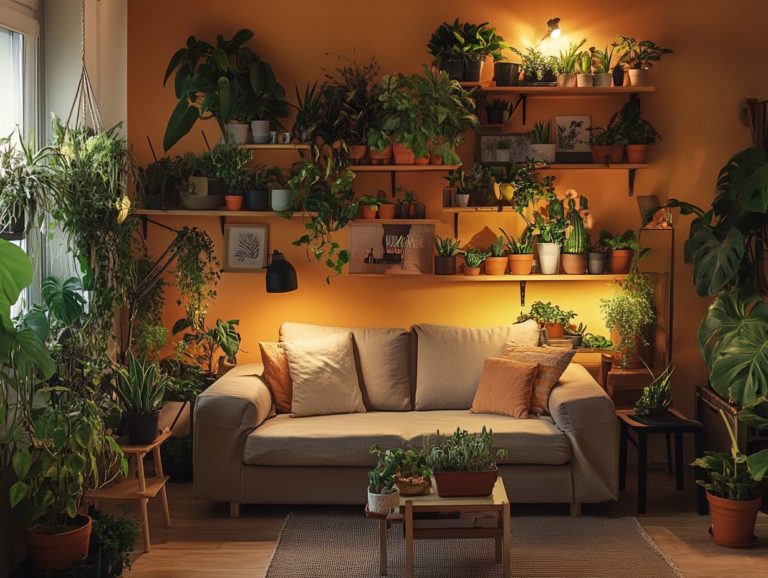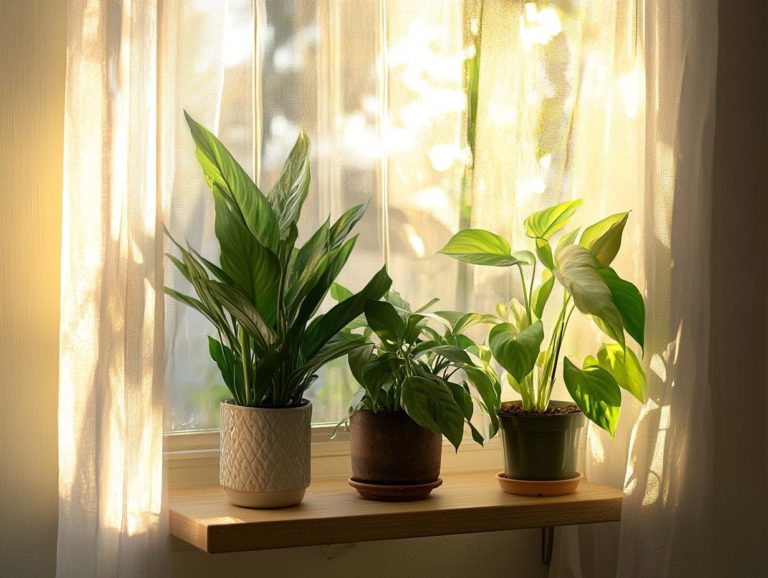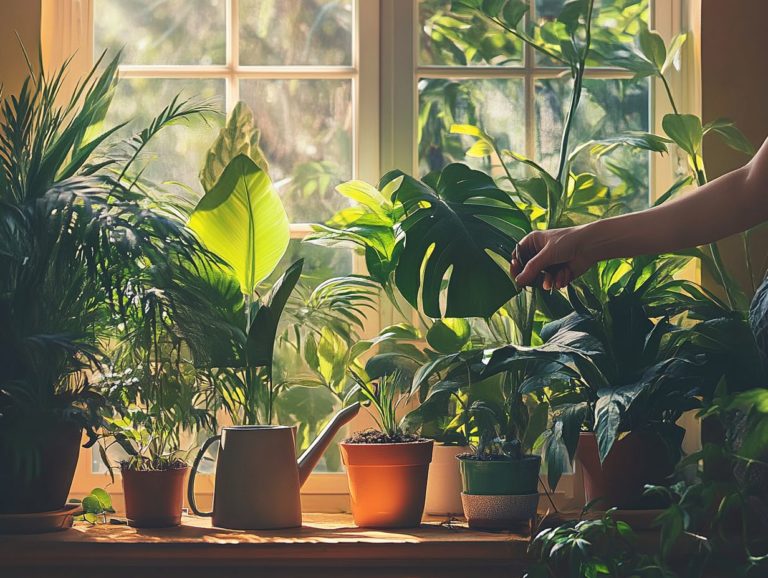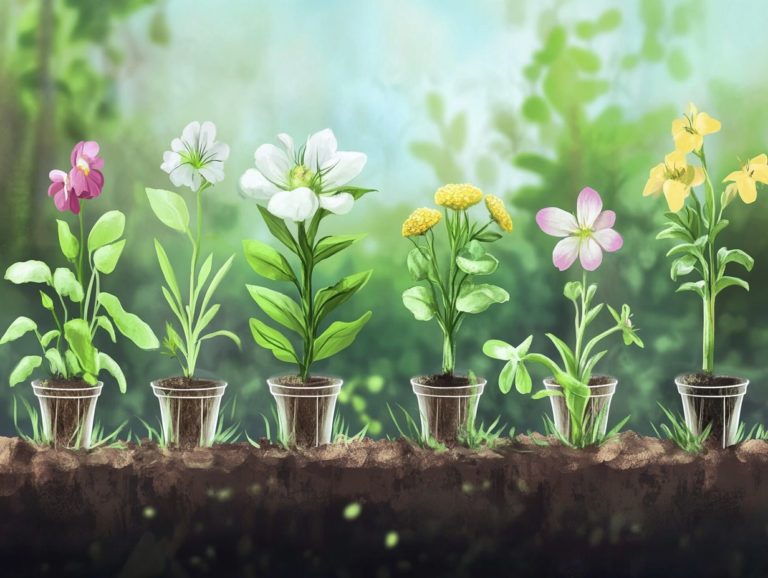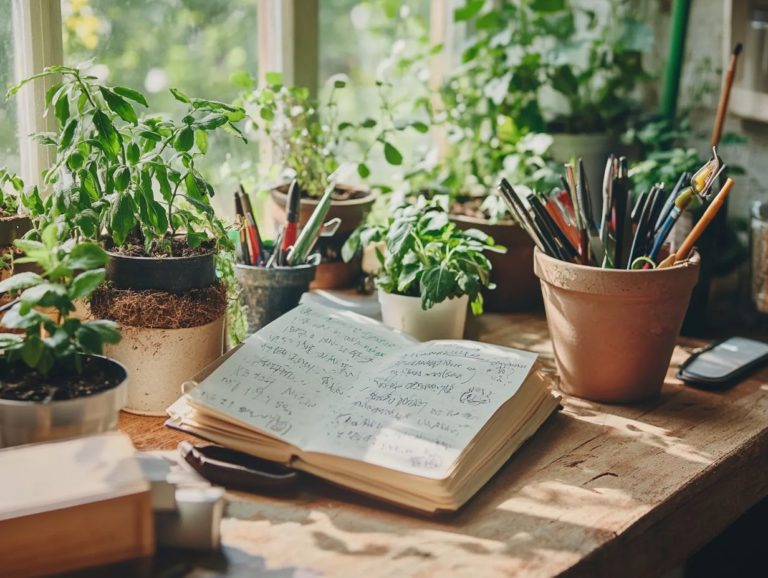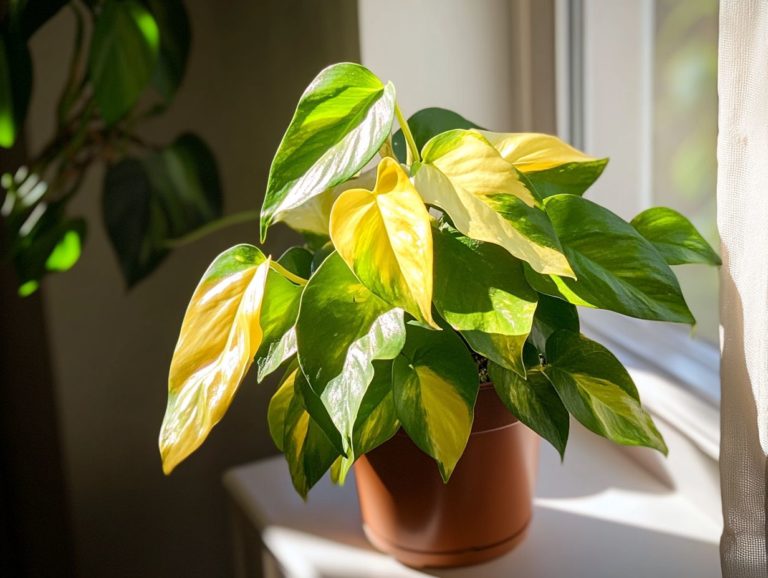How to Recognize Signs of Healthy Indoor Plants?
Indoor plants have the remarkable ability to transform your living space into a vibrant oasis while delivering a host of health advantages. Proper watering and adequate lighting are key to maintaining healthy plants.
This article delves into the numerous benefits of incorporating greenery indoors. From enhancing air quality to uplifting your overall well-being, you’ll find insights on how to identify healthy plants, including visual cues like vibrant leaves and common pests to avoid.
You will uncover essential care tips for watering, sunlight exposure, and fertilization to support rapid growth. Whether you’re just starting your plant journey or are a seasoned enthusiast, you ll learn how to select the perfect indoor plants that harmonize with your environment.
Contents
- Benefits of Indoor Plants
- Signs of Healthy Indoor Plants
- Caring for Indoor Plants
- Choosing the Right Indoor Plants
- Frequently Asked Questions
- What are some signs of a healthy indoor plant?
- How can I tell if my indoor plant is getting enough sunlight?
- What are some common pest and disease signs in indoor plants?
- How do I know if my indoor plant needs to be watered?
- What is a good humidity level for indoor plants?
- How do I recognize signs of over or under-watering in my indoor plant?
Key Takeaways:
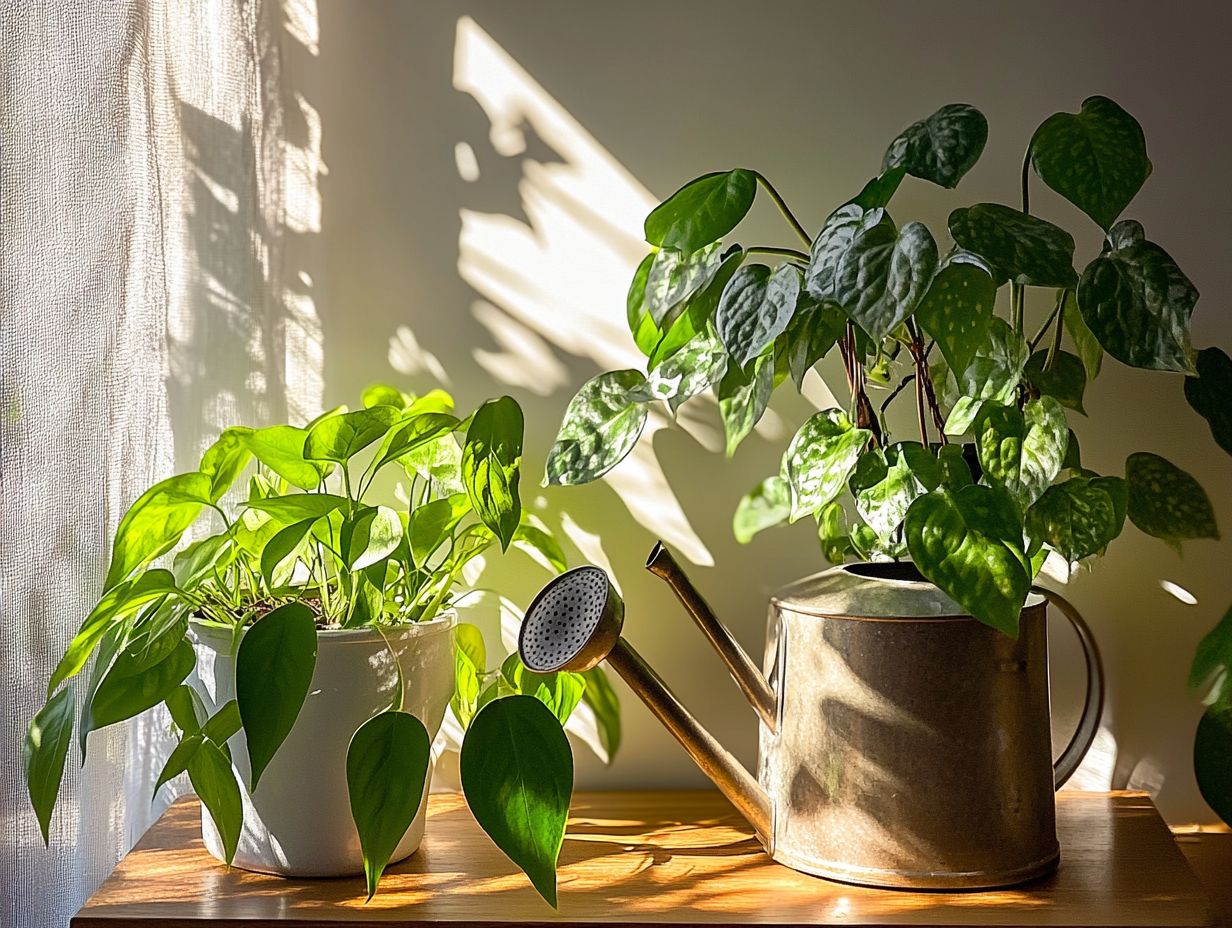
- Proper watering and lighting are essential for maintaining healthy indoor plants, as over or under watering and inadequate lighting can be detrimental.
- Visual indicators, such as vibrant foliage characteristics and absence of pests, are key signs of a healthy indoor plant.
- Choosing the right indoor plant for your environment and skill level is crucial for ensuring its long-term health and well-being.
Benefits of Indoor Plants
Indoor plants present an array of benefits that elevate both the aesthetics and overall well-being of your living space. These houseplants do more than just beautify your home; they actively improve air quality by filtering out toxins and releasing oxygen.
By introducing greenery into your environment, you create a healthier atmosphere that fosters calmness and alleviates stress. Research indicates that integrating plants into your home can enhance productivity, uplift your mood, and promote better health.
With the right care, these plants flourish, showcasing vibrant leaves. They enrich your life in countless ways.
Improving Air Quality and Health
Houseplants are essential for enhancing air quality by filtering out harmful toxins and releasing vital oxygen. This creates a healthier environment for you and your family.
Among the many choices available, the snake plant and pothos truly shine with their remarkable ability to absorb common indoor pollutants like formaldehyde, benzene, and xylene. These hardy greens thrive in various conditions and significantly contribute to indoor air purity.
By welcoming these particular varieties into your living space, you ll quickly realize the importance of clean air. They help maintain optimal oxygen levels that are crucial for your overall health and well-being.
This natural air filtration system cultivates a more invigorating atmosphere, allowing everyone to breathe easier and enjoy their surroundings.
Signs of Healthy Indoor Plants
Recognizing the signs of healthy indoor plants is essential for maintaining their vitality. Healthy leaves serve as a primary indicator, showcasing vibrant color and firmness.
Common issues such as yellowing leaves or brown tips can indicate problems with sunlight exposure, watering habits, or soil quality. If these problems aren t addressed promptly, they can hinder your plants growth and overall well-being.
Imagine transforming your home! Your journey to a healthier home starts now. Start your indoor garden today and experience the benefits for yourself!
Visual Indicators of Health
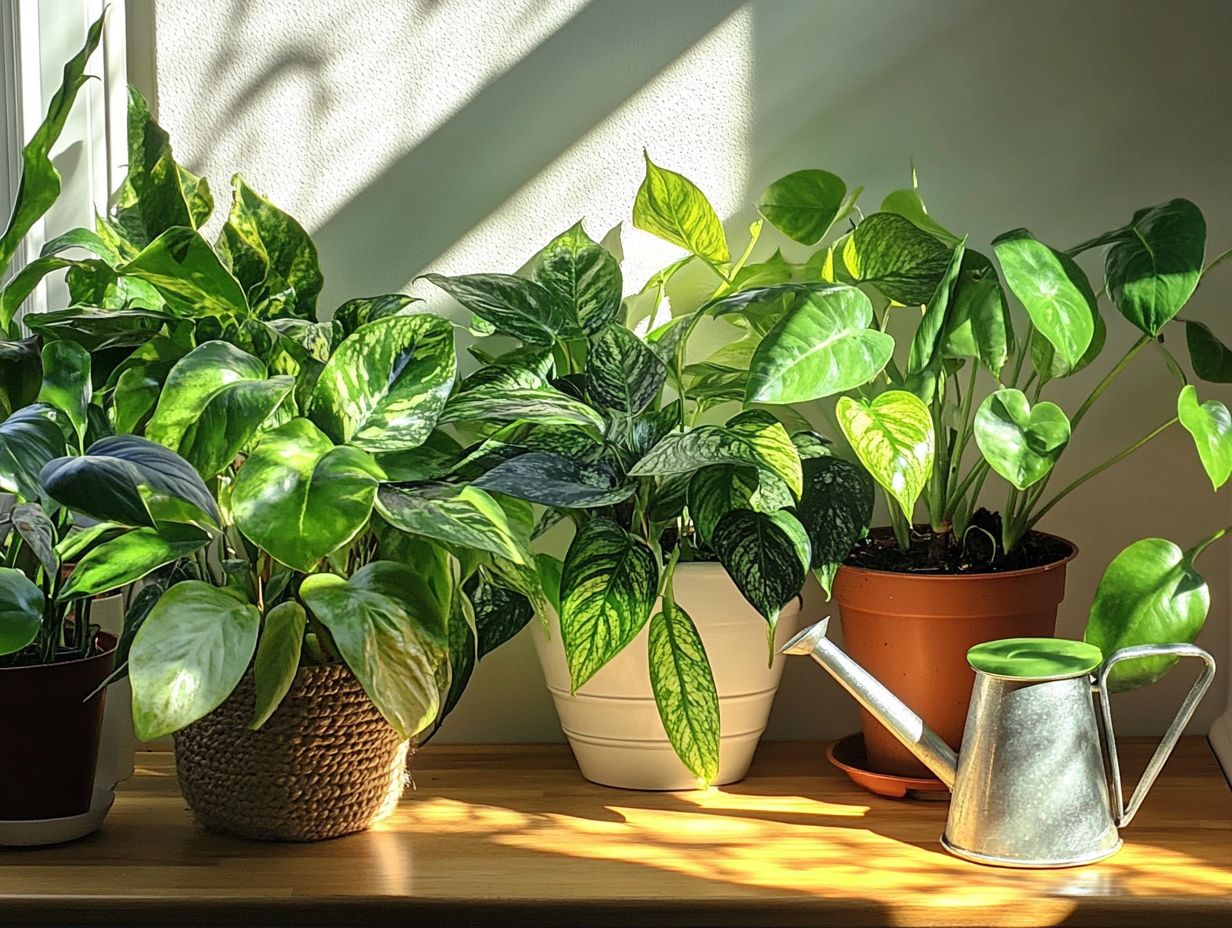
Visual indicators of plant health are crucial for gardeners. They show vibrant leaves and strong foliage, indicating good growth conditions.
These attributes provide valuable insights into the overall vitality of your greenery. For example, lush, green leaves typically indicate that the plant is getting enough sunlight and nutrients. Conversely, yellowing or wilting leaves might serve as red flags for stress or nutrient deficiencies.
Look closely at your leaves. The texture can tell you a lot about your plant’s health; a glossy surface often signals good health, while a dry or brittle feel may suggest that your plant is facing challenges related to soil quality or nutrient deficiency. By observing these signs, you can make better decisions for your plants.
Common Pests and Diseases to Watch Out For
Common pests like aphids, spider mites, mealybugs, and fungal infections can threaten your plants, making it essential to remain vigilant in your care routine.
These tiny intruders don t just feast on plant sap; they can create more problems for your plants. To prevent infestations, maintaining proper humidity levels and routinely inspecting your plants for signs of distress is crucial. Try natural remedies like neem oil, fungicides, or insecticidal soap for effective pest control. Ensure good air circulation to keep diseases at bay and avoid overwatering to foster a healthy and thriving indoor garden.
Caring for Indoor Plants
Caring for indoor plants demands a clear understanding of their specific needs, including the right balance of watering, appropriate lighting, and consistent maintenance.
Adopting a well-rounded approach to plant care accelerates growth and ensures healthy roots and vibrant foliage. Regular pruning and timely repotting are essential practices that can avert common problems like root rot. Additionally, recognizing stress signs in indoor plants creates an ideal environment for your plants.
Proper Watering and Lighting Techniques
Implementing proper watering and lighting techniques is essential for the health of your indoor plants, ensuring they achieve the perfect balance of moisture and light exposure.
For optimal growth, establish a consistent watering schedule tailored to your specific plants, along with monitoring soil moisture levels. Checking the soil moisture levels is straightforward; simply use your finger to assess the top inch of soil for valuable insights on when it s time to water.
It s equally important to ensure your plants are in well-draining pots with drainage holes, as stagnant water can lead to root rot a common and detrimental issue. Alongside moisture, adequate lighting plays a crucial role. Different plants flourish under various light conditions.
Finding that sweet spot for both moisture and light can dramatically enhance your plants’ vitality and resilience.
Fertilization and Repotting
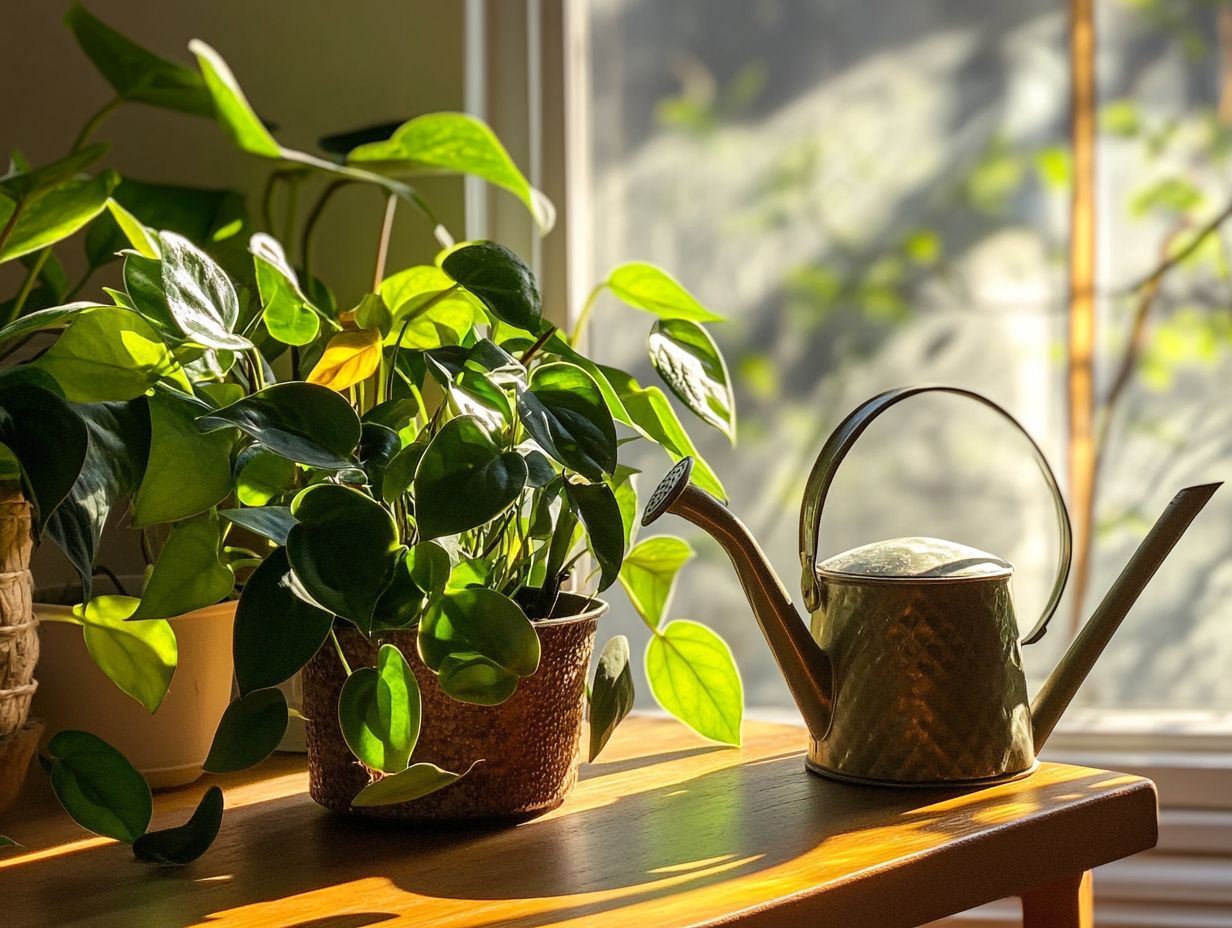
Fertilization and repotting are essential steps in maintaining the health of your indoor plants. They provide the nutrients and space your plants need to thrive.
Understanding how to fertilize your indoor plants with clean water and appropriate nitrogen levels can enhance their vitality. Selecting the right type of fertilizer whether organic, liquid, or slow-release tailored to your plant’s growth stage can make a significant difference.
Using high-quality water is equally important; it helps prevent damage that can occur from chemicals in tap water.
Watch for signs that indicate it s time to repot. If you see roots peeking out from the drainage holes or notice stunted growth, your plant may have outgrown its current container.
Repotting refreshes the nutrients and potting mix, promoting healthy root development and setting your plants up for success.
Choosing the Right Indoor Plants
Choosing the right indoor plants can make your space come alive! It requires thoughtful consideration of various factors, including your unique environment, personal gardening skills, and humidity levels.
Elements like humidity, sunlight exposure, and available space significantly influence which plants will flourish in your home.
Whether you’re starting your gardening journey or are already experienced, understanding these factors will help you choose healthy plants that can adapt well to your living area.
Considerations for Different Environments and Skill Levels
When selecting indoor plants, consider the specific environments they will inhabit, as well as your own skill level in caring for them.
Available light, temperature fluctuations, and humidity can significantly impact a plant’s health and growth. Some plants thrive in bright, indirect light, while others are content in low-light conditions. Assessing each room’s lighting is essential before making your choice.
Understanding the temperature range a plant can comfortably tolerate ensures it remains happy in its new home.
Humidity is another critical element. Many tropical plants flourish in higher humidity levels, which you can recreate with humidity trays or regular misting.
If you’re just starting out, consider low-maintenance varieties like pothos or snake plants that adapt easily. For those with a bit more experience, exploring finicky species that require precise care can be quite rewarding.
By aligning plants with their ideal conditions and your caregiving abilities, you can significantly enhance your chances of long-term success.
Frequently Asked Questions
What are some signs of a healthy indoor plant?
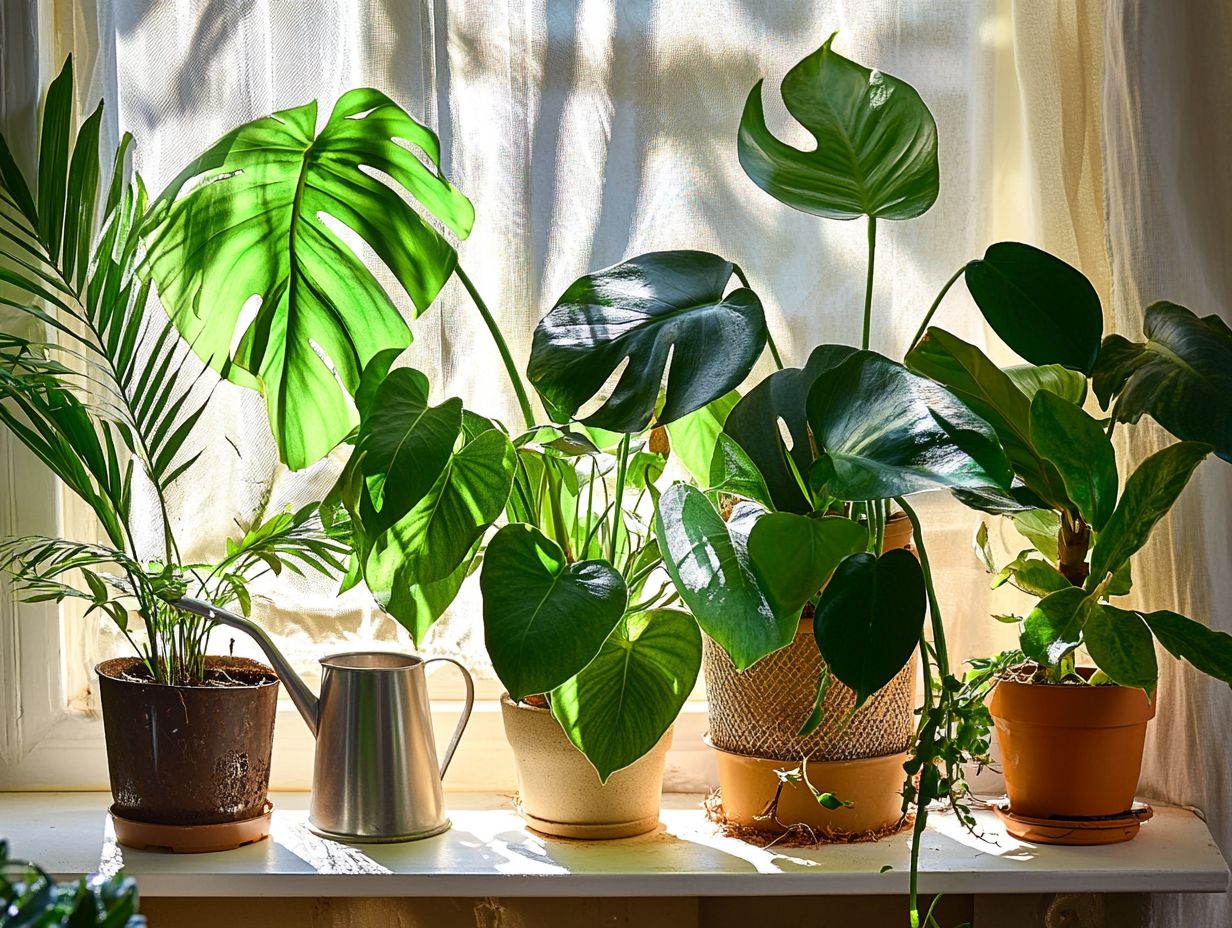
Some signs of a healthy indoor plant include:
- Vibrant and green leaves
- Strong stems
- New growth
These indicators are essential for overall plant care.
How can I tell if my indoor plant is getting enough sunlight?
If your indoor plant is getting enough sunlight exposure, its leaves will be evenly colored and not pale or yellow. The plant will also have a balanced shape and not lean towards the light source, indicating healthy roots.
What are some common pest and disease signs in indoor plants?
Common pest and disease signs in indoor plants include:
- Yellowing leaves
- Brown spots or patches
- An overall sickly appearance
These issues are often caused by pests like aphids and spider mites. You may also see insects or webs on the plant, which can be treated with neem oil or fungicides.
Have more questions about indoor plant care? Don’t hesitate to explore further or ask us!
How do I know if my indoor plant needs to be watered?
To check if your indoor plant needs water, feel the top inch of the soil. If it s dry, it s time to water your plant with quality water to keep the soil healthy.
Make sure your pot has drainage holes to avoid water sitting at the bottom, which can lead to root rot. You can also use a moisture meter or stick your finger into the soil for a quick check.
What is a good humidity level for indoor plants?
Indoor plants thrive at a humidity level of 50-60%. You can easily boost humidity by misting the leaves or using a humidifier.
Another simple trick is to group your plants together. This helps create a mini-environment that keeps them happy and healthy.
How do I recognize signs of over or under-watering in my indoor plant?
Over-watering can cause yellowing leaves and wilting. If the soil feels constantly wet, your plant may be suffering from root rot.
On the other hand, under-watering leads to dry, crispy leaves and totally dry soil. Both conditions can hinder your plant s growth, so keep a close eye!

